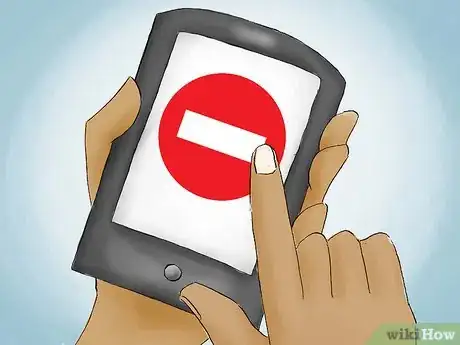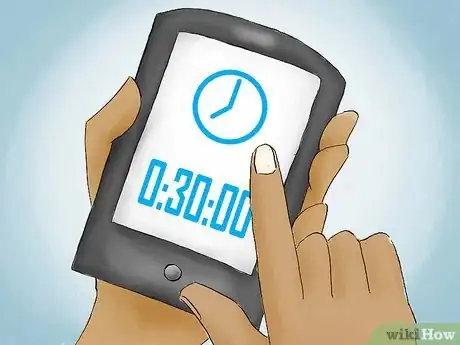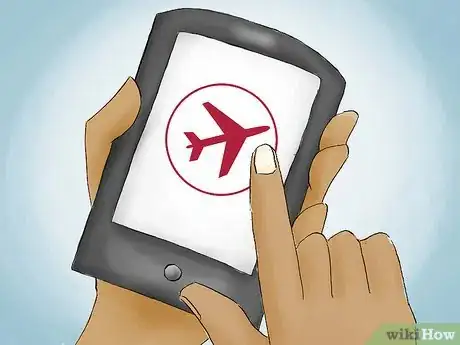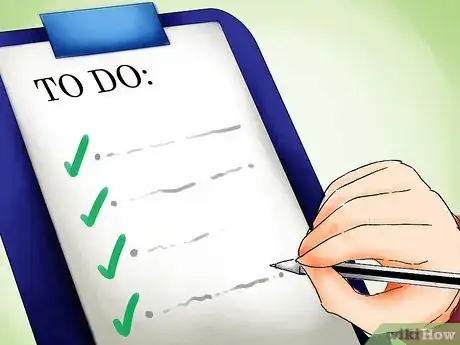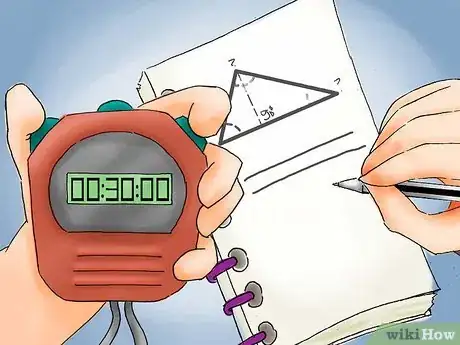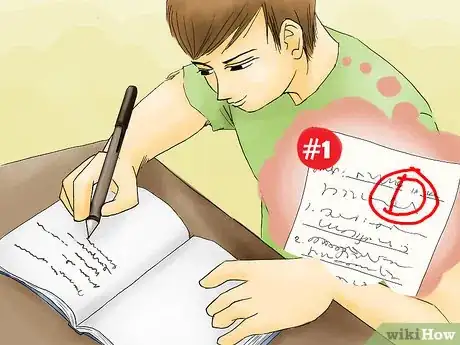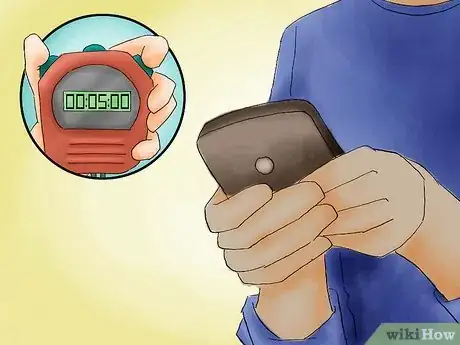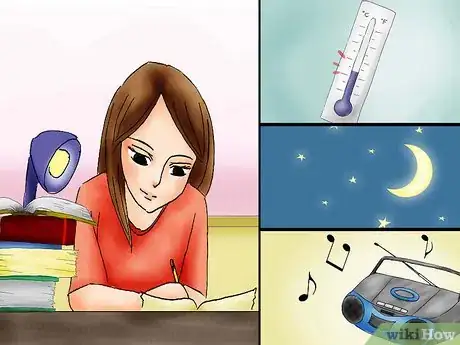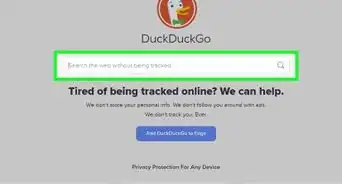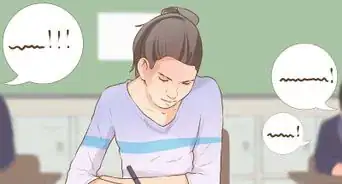X
wikiHow is a “wiki,” similar to Wikipedia, which means that many of our articles are co-written by multiple authors. To create this article, volunteer authors worked to edit and improve it over time.
This article has been viewed 60,275 times.
Learn more...
Technology allows us to access to endless data and research opportunities. The same devices that help you to learn can also distract you from getting your work done. The best way to stop getting distracted by your phone or device is to turn it off; however, many people use devices to study. Start by reducing your connectivity and planning your study session in chunks of time.
Steps
Part 1
Part 1 of 2:
Using Distraction-Blocking Apps
-
1Switch on the “Do Not Disturb” mode. iPhone and Android phones have settings that allow you to mute all notification beeps and calls during a time of your choosing. When you want to study, you should use your quick settings to turn this mode on, and don’t return to it until you have completed your study session.
- On iPhones, swipe up from the home screen to access your basic settings. Tap the moon shape and this function will be enabled.
- On Android phones, pull down the notifications drawer. Swipe down again to access the quick settings. Turn the Do not disturb function and select the amount of time you want it to be active.[1]
-
2Download a timing app or use your timer to work for a period of time. After you have turned on your “Do Not Disturb” mode, set your timer for 30 minutes and place it far away from you. When the timer beeps, stop working and take a five to 10 minute break.
- You can download an app called Pomodoro or Unplugged that set timers for you and tracks your progress. With some of these apps, they remind you to set the phone down if you try to use it during the allotted time.
Advertisement -
3Use Airplane mode to turn off your ability to connect to an outside network. Also, turn off Wi-Fi. This will stop calls and texts from coming through, and it will not allow you to access distracting apps.
-
4Inform your friends that you are unavailable when you are studying. Block out regular time when they know you will be unavailable.
-
5Place your phone on a shelf or in another area of the room, rather than on your desk.
-
6Give your phone to a friend, if you can’t stay away from it. A physical barrier may make you feel ashamed that you can’t do without your phone. Make yourself accountable to someone.
Advertisement
Part 2
Part 2 of 2:
Organizing Your Studying Process
-
1Make a to-do list so that you have a feasible game plan for your study session. Crossing things off your list as you do them will give you a lot of pleasure.
-
2Create blocks of tasks. Make sure these tasks are no more than 25 to 30 minutes. This is the amount of time you can expect yourself to focus without any disruptions.[2]
- Splitting your studying into separate tasks can also ensure you do a thorough job. For example, you may have a research session, an outlining session and a session where you write each of the major points in a paper.
-
3Do the most important/hardest tasks near the beginning of your study session. You may want to get one or two easier tasks done right away in order to feel like you’ve accomplished something, but then you should try to take care of the highest priorities while you are more focused.[3]
-
4Get up and move around after you have completed a task block. Try to clear your head by getting something to eat or going outside.
-
5Time yourself when you use your phone during a break. Set your timer for five minutes so that you only take care of the most important things.
-
6Pay attention to the things that help you “flow.” This is the feeling of being lost in a task enough to ignore time and simply do the task. Note the times when this happens and try to recreate the environment.
-
7Work into longer periods of flow. After doing 25-minute blocks, you may be able to move to 60-minute blocks, where you are able to get larger tasks done.
Advertisement
Warnings
- Some of the phone apps that get rid of distractions are paid apps. Try the free version if it is available, to ensure it’s something you need.⧼thumbs_response⧽
Advertisement
Things You'll Need
- App Store account
- Distraction-free apps
- Timer app
- To-Do List
- Task blocks
References
- ↑ http://www.androidcentral.com/inside-android-ms-new-do-not-disturb-mode
- ↑ http://www.makeuseof.com/tag/day-blocking-mobile-distractions/
- ↑ http://examinedexistence.com/training-the-brain-how-to-focus-better-and-avoid-distractions/
- ↑ http://99u.com/articles/6969/10-online-tools-for-better-attention-focus
About This Article
Advertisement
